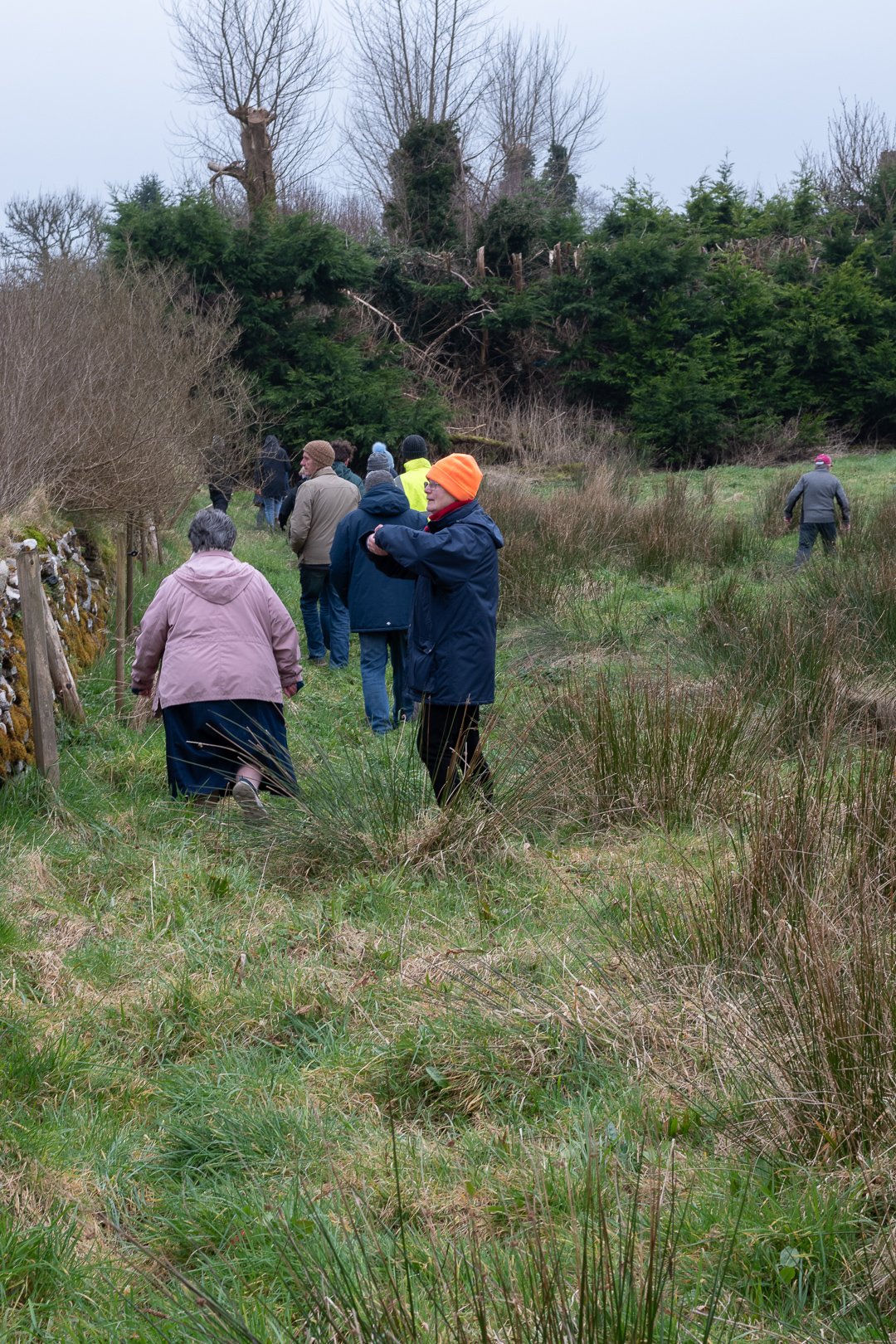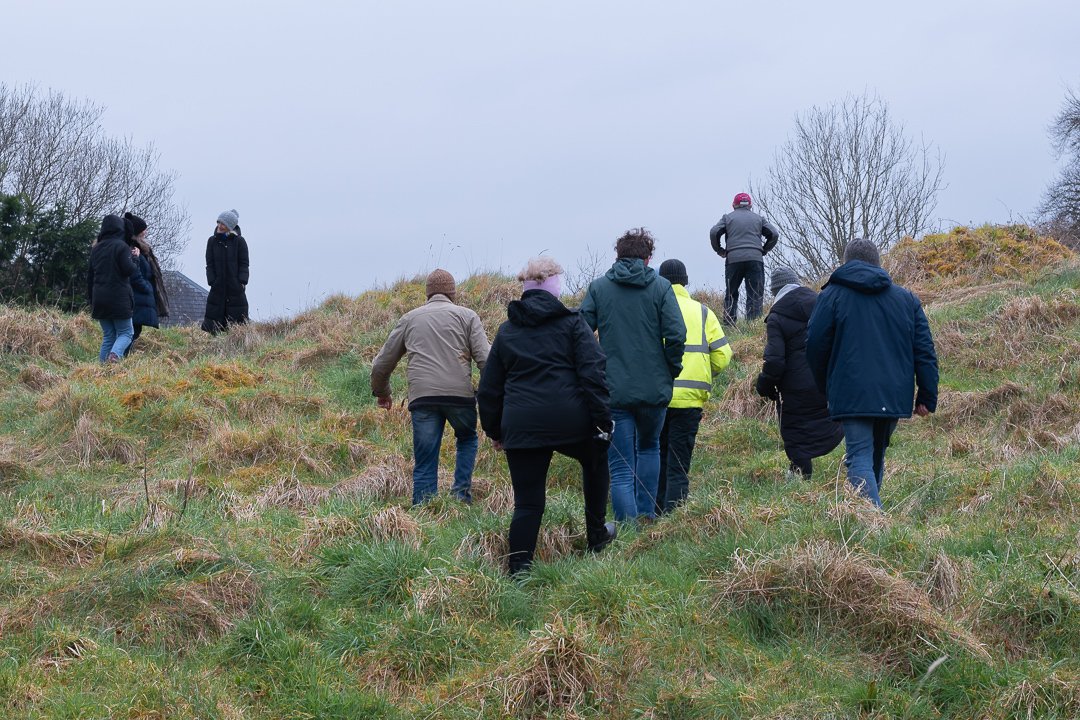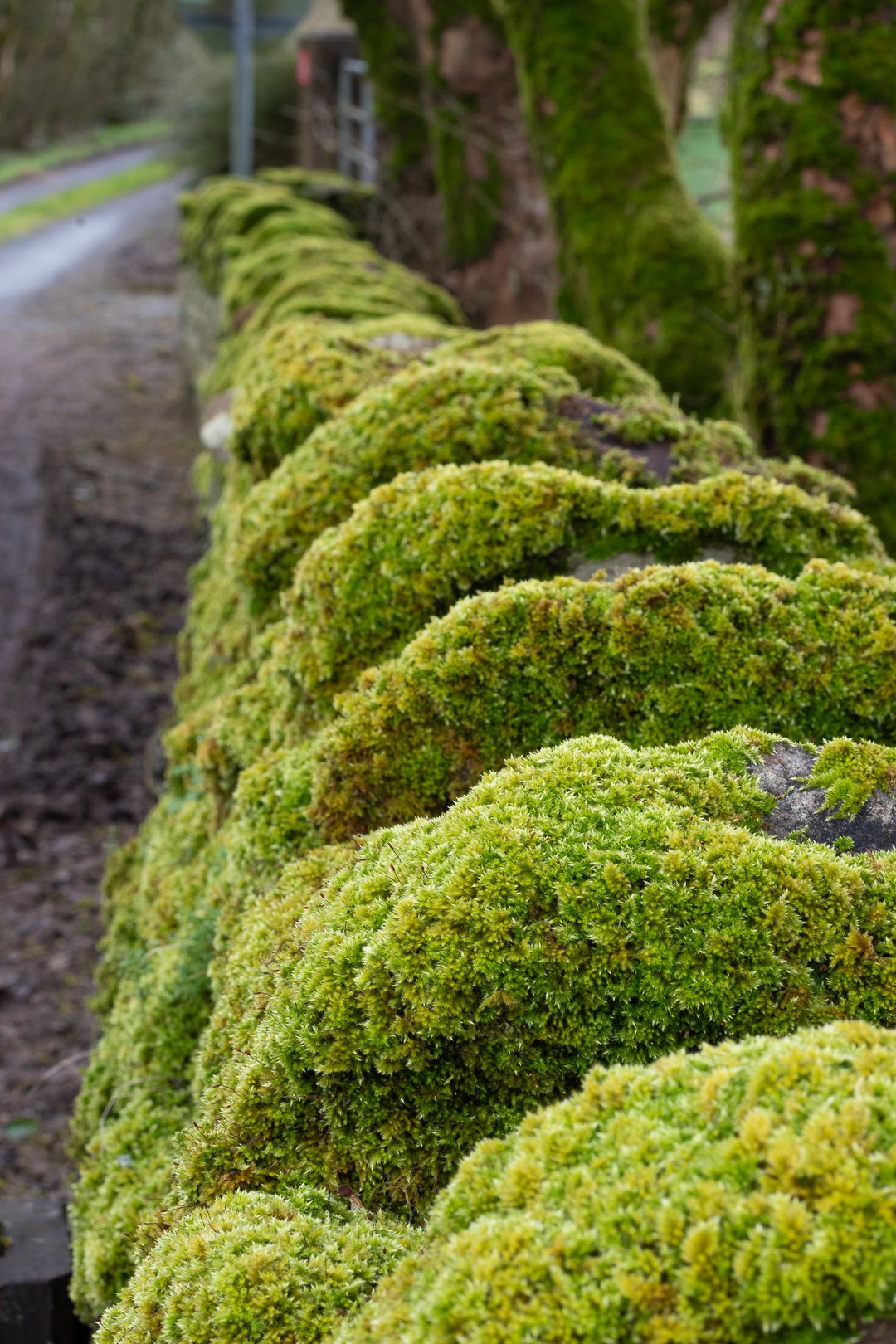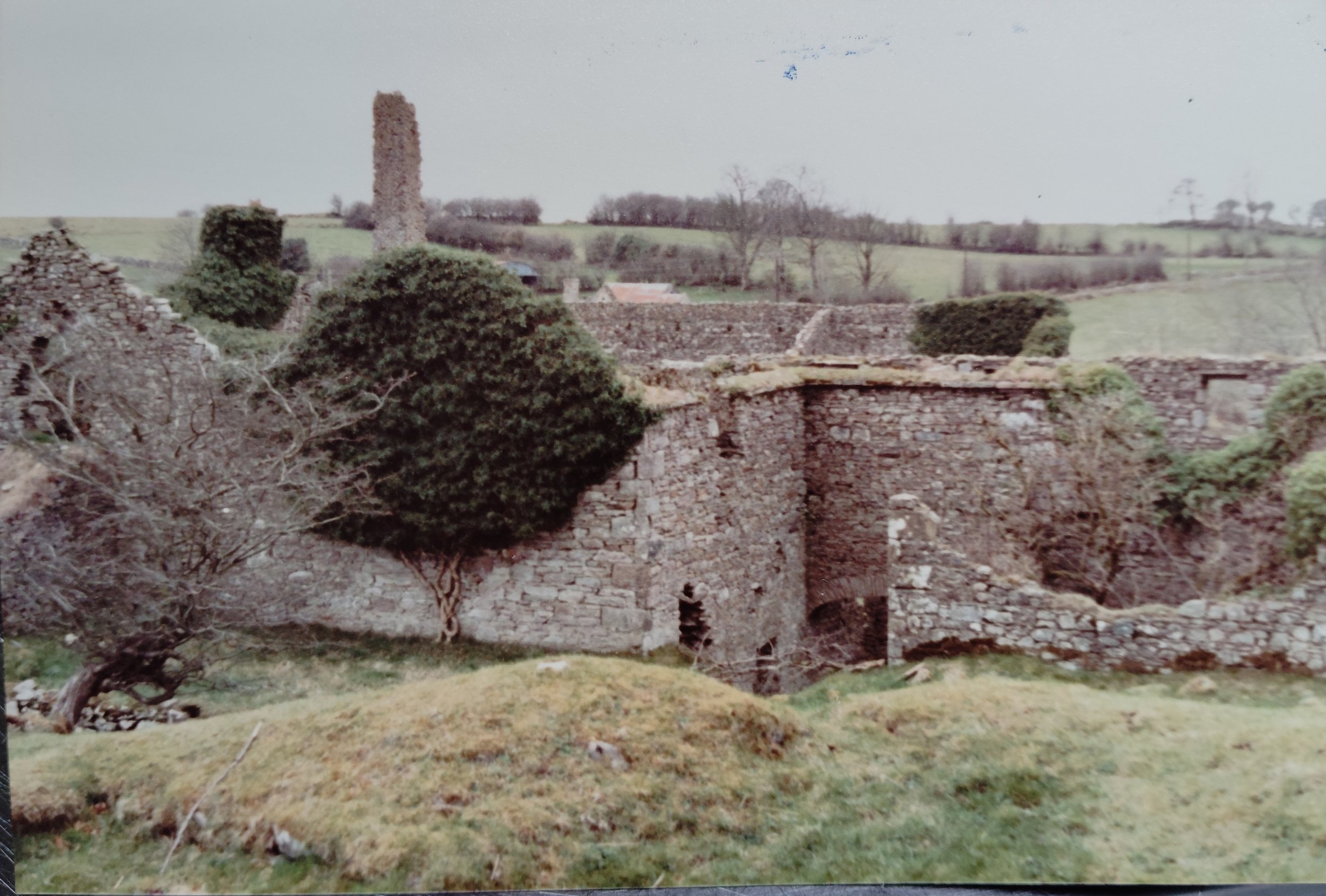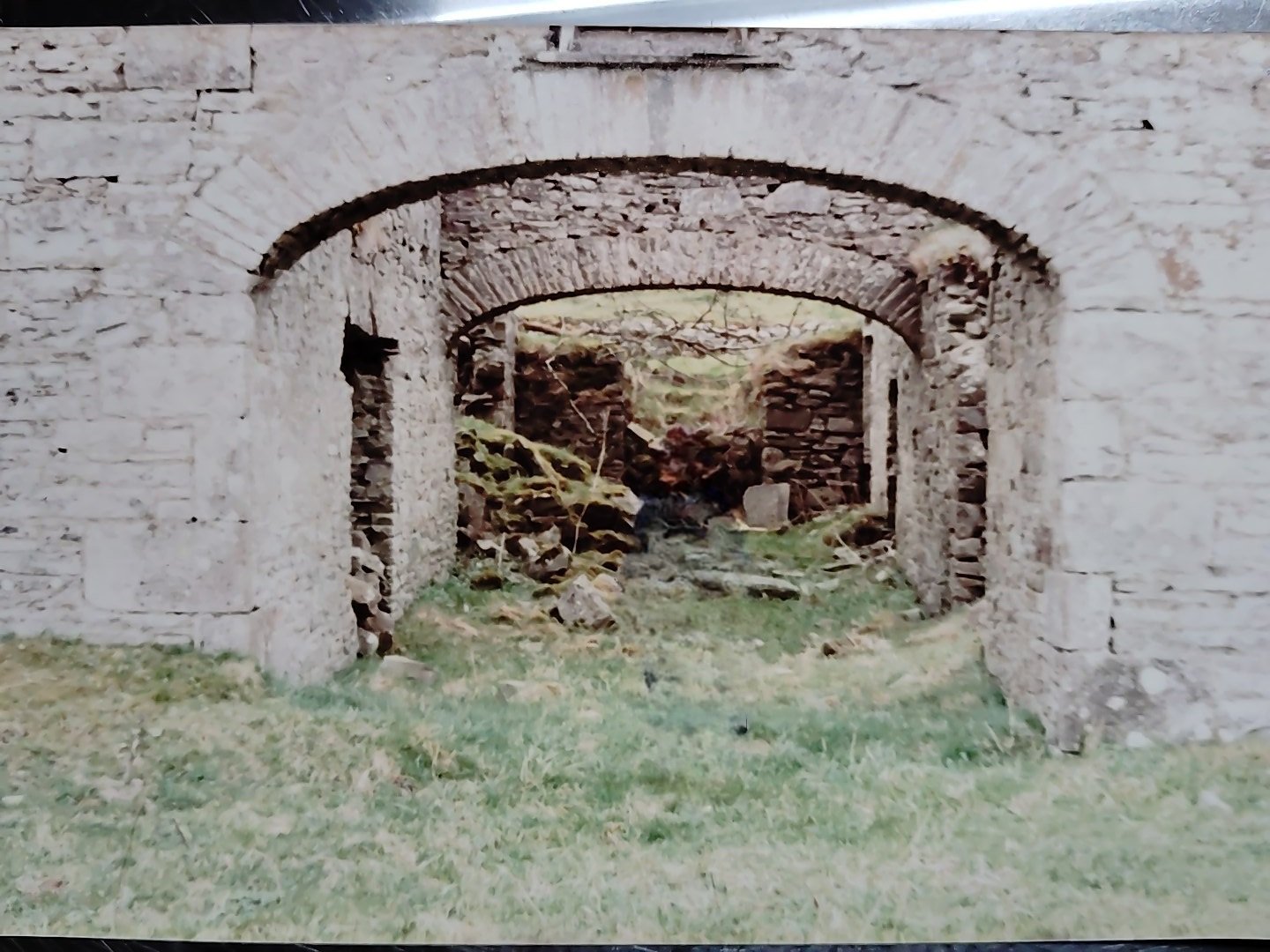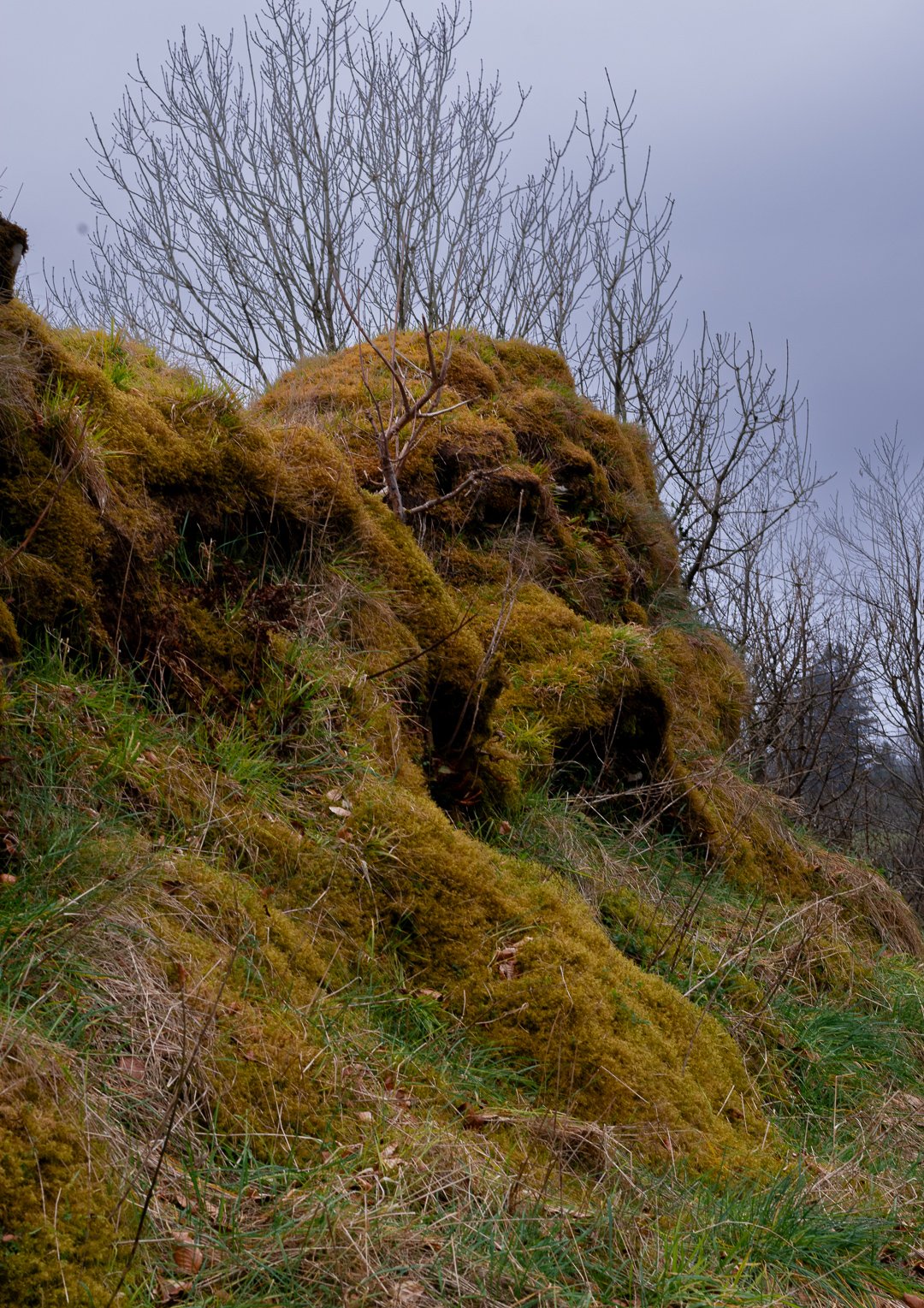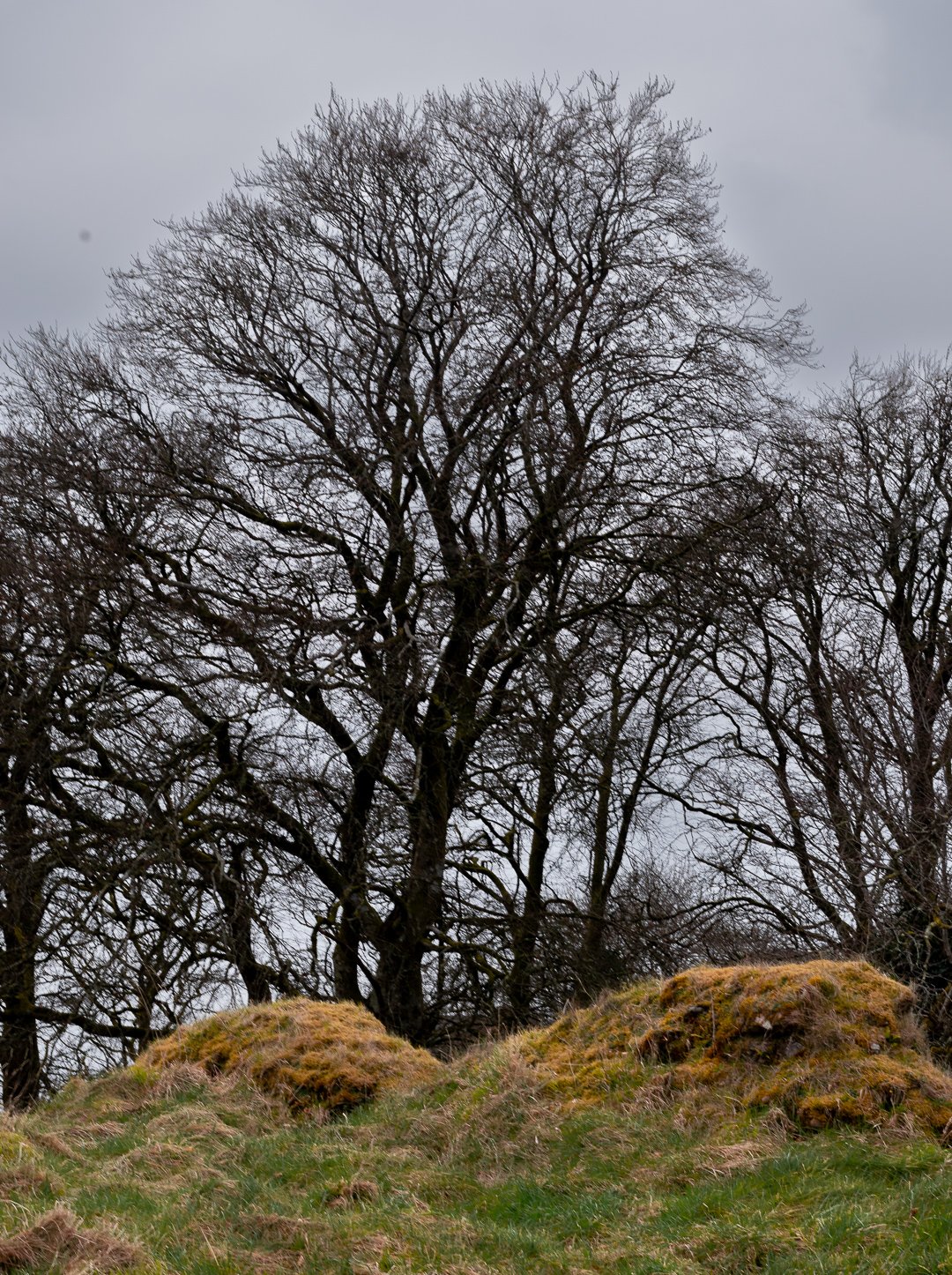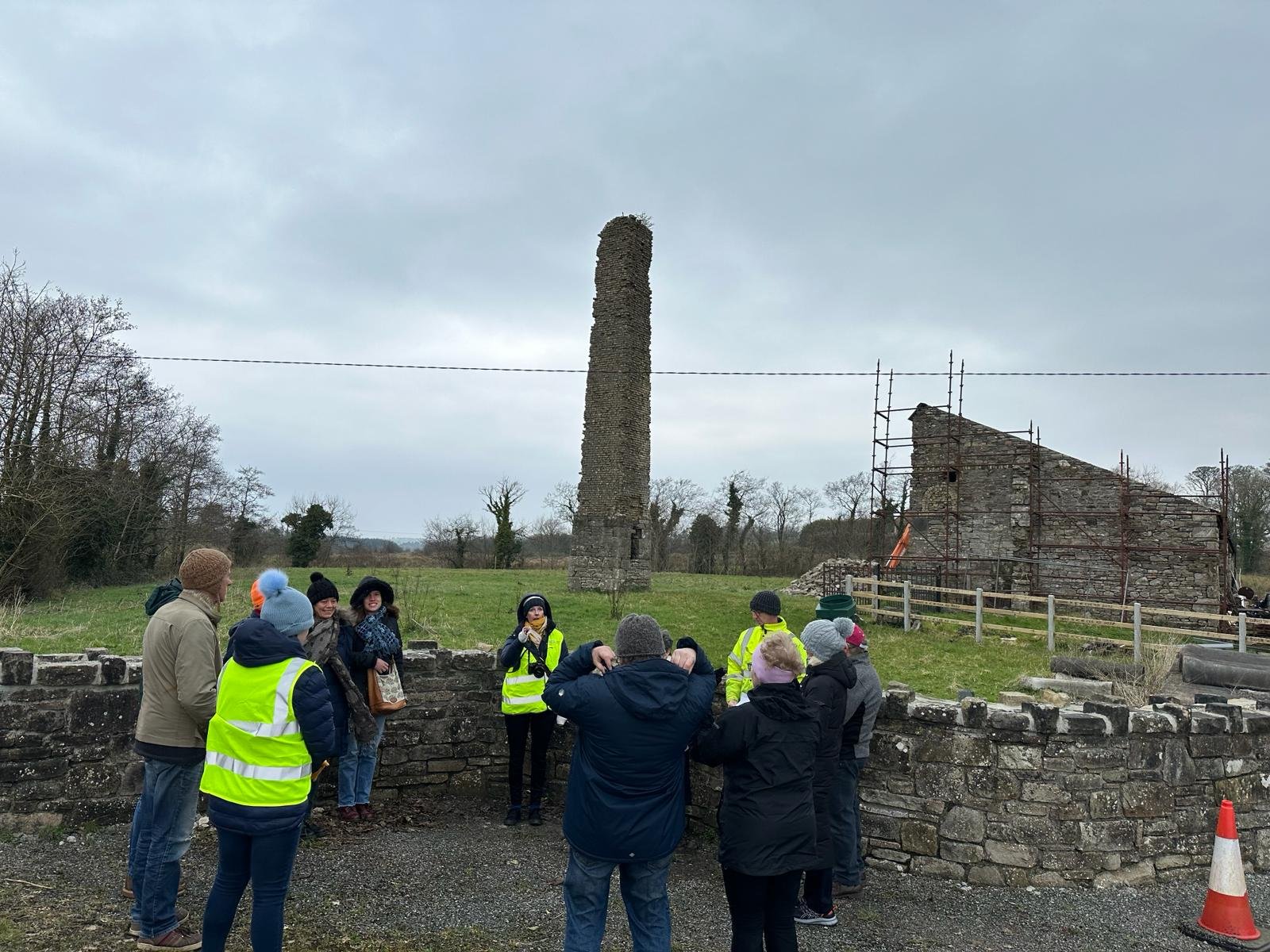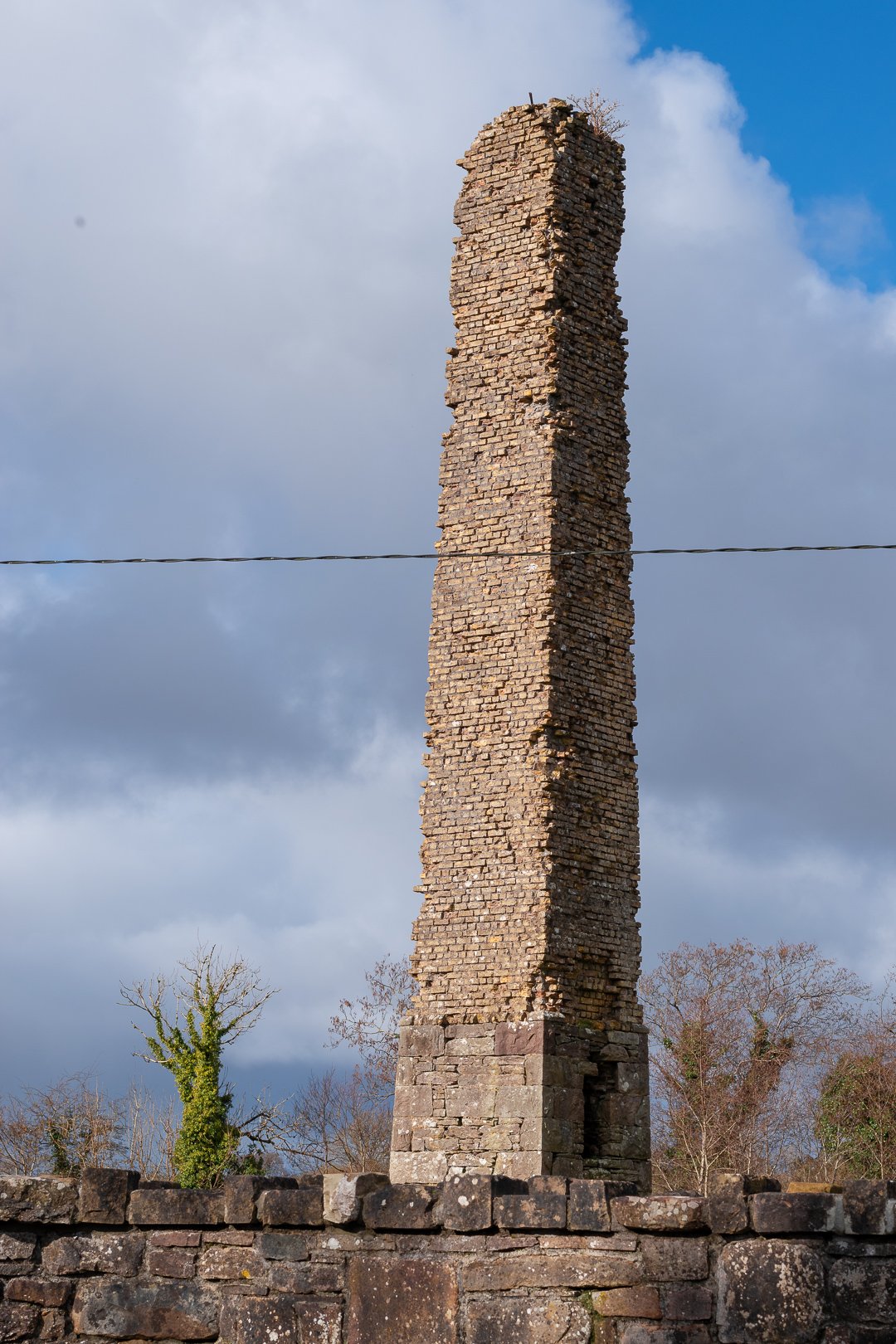Castlemore flax mill & castle Heritage Walk
Map of the Flax Mill and Castle, sourced by Joe Geever, a member of our group. Ordnance Survey, Ireland.
Welcome to a collection of diary entries that explore the essence of our contemplative walks around Ballaghaderreen's heritage sites.
In collaboration with members of the local community, this diary will evolve into a multimedia series featuring audio recordings, videos, and artworks that encapsulate the personal narratives shared during these gatherings.
Furthermore, as we collect more stories, we will keep this diary updated, so follow us on Instagram for all the latest news!
This blog begins with an overview of insights gained from our walks, followed by relavent history and folklore associated with Castlemore Mill and Castle.
Our Contemplative Walks have highlighted that heritage is more than just a physical remnant of the past, or a geographic location with a focus on materiality.
It has become clear that preserving heritage involves more than just conserving the tangible, such as sites, objects, and structures. Indeed, it’s the intangible - our emotions, memories and stories - that foster a profound sense of place for people living in the area.
The stories and memories shared during our walks were at times deeply moving; evoking emotions of sadness and loss, as well as sparking joy and excitement at the prospect of exploring the locality as a collective, rather than individually.
When we share these experiences collectively, we gain a fresh perspectives that can enrich our interactions and engagement, allowing us to see a familiar environment anew, as diverse viewpoints weave together a vibrant tapestry of understanding; one that is dynamic and forever changing.
The Dynamic and enduring nature of heritage
Engaging with the site’s tangible and intangible qualities simultaneously, offered us a unique opportunity to palpably sense the ‘spirit' of the place we were visiting. It became clear that this kind of multi-layered engagement was just as significant as learning about the historical significance of these sites. Within the context of PLACEWAYS - this point highlights the dynamic potential embedded within heritage experiences.
This insight is worth further investigation, especially in relation to the value of consistently interacting with heritage through regular celebrations, ceremonies, story-telling sessions, and art projects. Consistent multi-layered engagement with heritage may help (re)establish a sense of community identity and belonging, because it invites meaningful, embodied experiences that have the potential to endure over time.
Castlemore Castle and The Old Flax Mill
A Copper Engraving Print of Castlemore Castle, belonging to Eithne Gallagher. Created 1791. Published in 1797, by Hooper and Wigstead, London. Purchased at Kenny’s Bookshop, Galway. Mayo is referenced in the title because up until 1898 Ballaghaderreen was in the Mayo district.
Caisleán Mór was constructed in 1356 by the De Nangle family of Norman descent. Eventually, the family adopted the name Costello - Mac Oisdealbhaigh. However, following the castle's destruction during the 'Flight of the Earls', the Mac Oisdealbhaigh clan erected a substantial residence about a mile away from Caisleán Mór. This property eventually became Thomas Strickland’s home (agent for Viscount Dillon). Ref. 1.
The Ruins of Caisleán Mór. Photos taken by Eithne Gallagher in 1983.
Once a symbol of power and prosperity, Caisleán Mór now lies in ruins. Today, only a handful of weather-beaten moss covered stones remain - a poignant reminder of the fleeting, impermanent nature of life.
In just a few years, nature will completely reclaim this site, burying the remnants of Caisleán Mór beneath layers of decay and sediment. All that will endure are memories, deeply woven into the intricately textured landscape.
Remnants of the castle wall, by Anna King
The Flax Mill
Built in the late 18th Century by Charles Strickland, The Flax Mill is now privately owned, and it has undergone significant renovation.
Our group at the Flax Mill site. Photo by Niamh McGarry.
The Flax Mill. Taken in 1940, by one of Eithne Gallagher’s family.
Our Flax Mill gathering emphasised the vital role of storytelling in strengthening our bond with place. As we recounted personal and inherited tales about the Mill, we journeyed back in time, while at the same time remaining deeply connected to the present moment.
This is an embodied process of layering past experiences within our current reality.
We collectively pieced together fragments of the past by re-imagining the bustling, vibrant flax industry of the late 18th and early 19th centuries.
We learned how flax growers travelled to the Mill from distant places, illustrating once again (as with the Creamery during our previous walk) the profound inter-connectedness of rural life in the past.
We marvelled at the beauty of the sky-blue flax flowers, and pondered their symbolism: resilience, rebirth and new beginnings.
And, there was a moment of quiet awe as our group gazed with curiosity through the wood toward the stream that was once the lifeblood of the mill's activities. These were moments that connected us to the ebb and flow of nature's timeless rhythm.
We chatted about the process of ‘retting’, which involved placing flax sheafs into hollows (called pits) for two weeks, where stream water (and natural microorganisms) broke down the hard outer bark and separated the fibres. The long fibres were called ‘lines’, which were woven into linen in Northern Ireland, and the shorter fibres (tows) were spun locally, and made into fabric similar to cotton. Mike Carty shared a story of how flax growers would stay over night in tiny dwellings beside the river to mind the flax.
The Mill Chimney, by Anna King
The Mill went through many changes over the years. In the mid 19th century the flax mill was closed and turned into a corn mill, processing oatmeal from local oats and wheat (Ref.1).
Local folklore emphasises that the pollution from the ‘retting’ process killed local salmon in Lough Gara, which led to the fishing authorities closing the flax mill. Another reason could have been that water driven mills were becoming obsolete due to the steam engine replacing the wooden paddle wheel - a view reinforced by a member of our group - Joe Geever, who commented that apparently “the steam engine shook the walls, as it was too powerful for the traditional water driven mill”.
In 1905, the Steward family from Boyle (who were skilled engineers) upgraded the mill and turned it into a saw factory.
Our walk concluded at the Community Garden
Lastly, we paused to appreciate the simple pleasure of receiving a pineapple sage plant from Maria May Fleming; a gesture that reflects the generous spirit of the participants taking part in our walks.
Thank you to all who attended - I really value and appreciate your contributions. Our next walk is on Saturday 23rd March. Details HERE.
Sources:
Echoes of Ballaghaderreen, by Siobhán Regan.
Schools Folklore Collection: Dúchas
Mike Carty, A member of our walking group,


